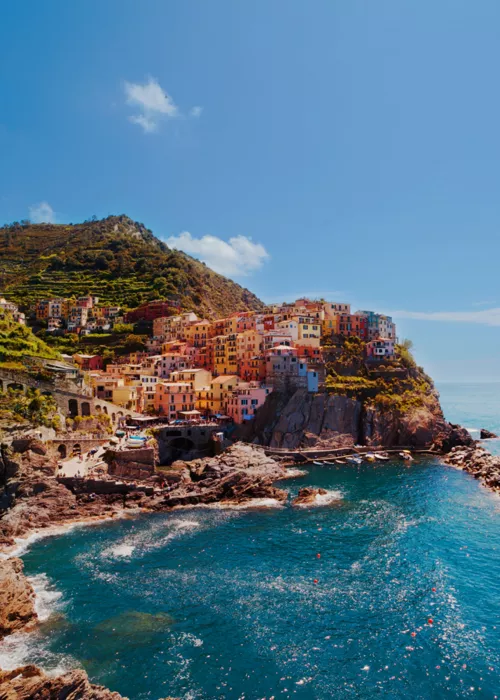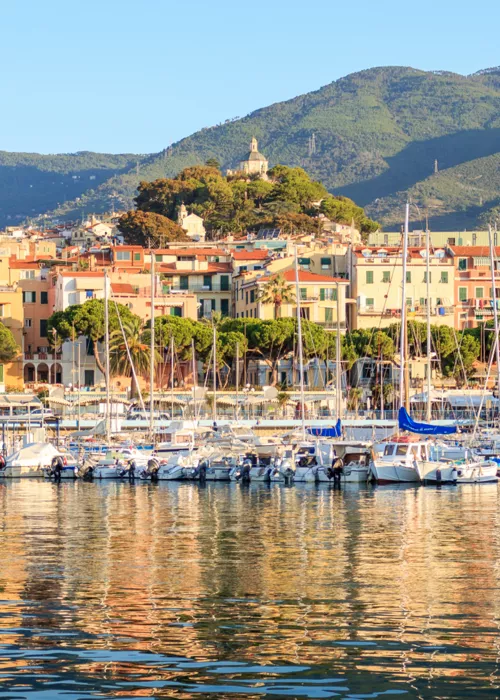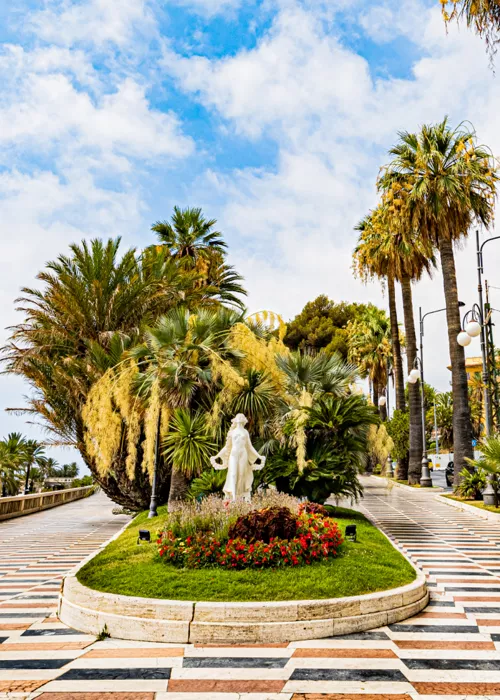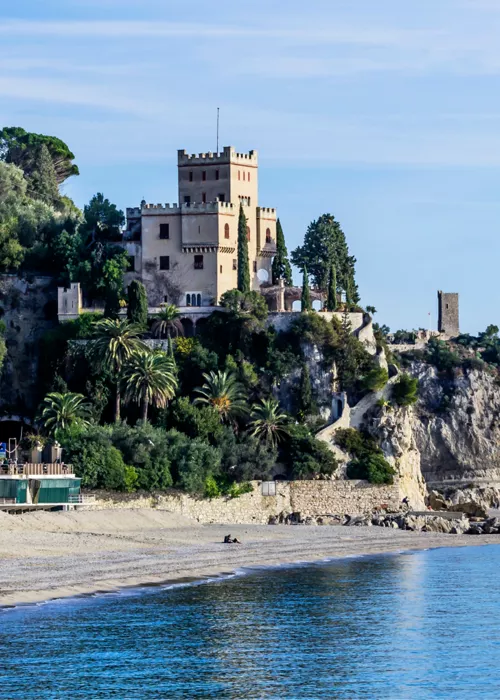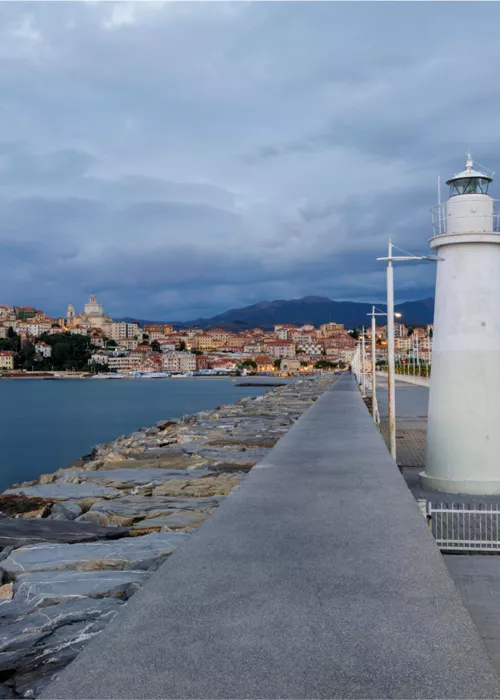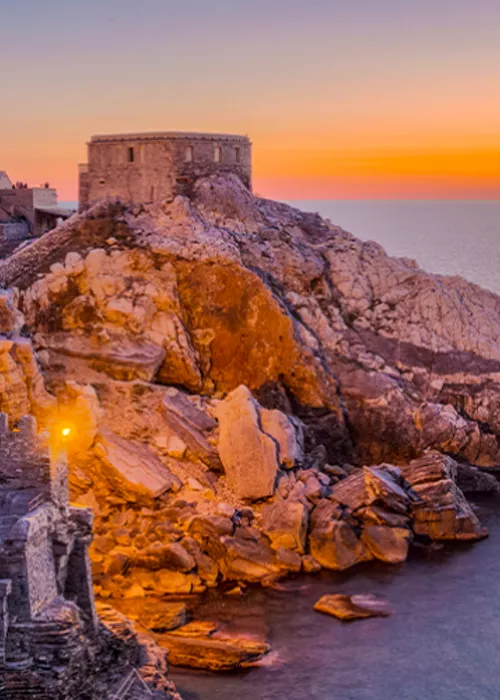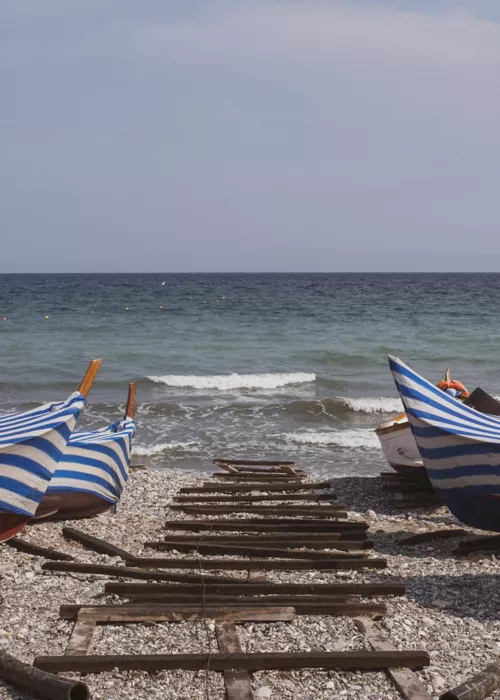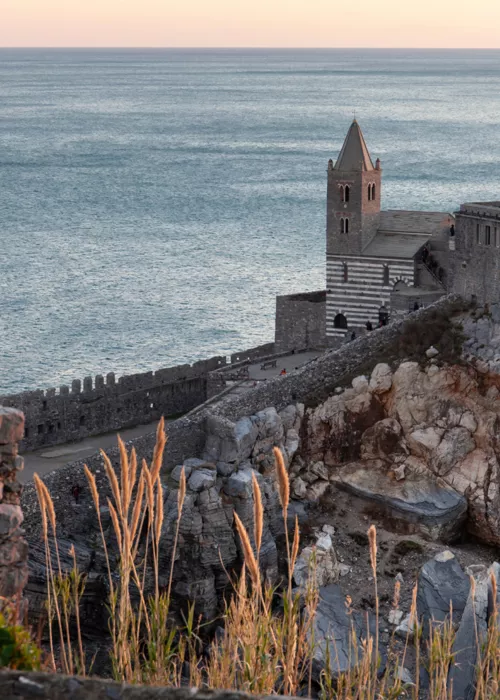The historic centre of Genoa: a thousand years of life

The Poets' Route leads us to discover Genoa and its hinterland, starting from Genoa's Marina Porto Antico, the ideal place for yachtsmen who want to visit Genoa with a short stopover, thanks to the wide range of services and the high quality of the available moorings and berths. The Marina Porto Antico is located in the heart of Genoa's historic centre, a UNESCO World Heritage Site, in the tourist area near the Aquarium and Piazza San Giorgio, the site of the Forum of Roman Genoa and the starting point of Via Postumia. This ancient road, inaugurated in 148 B.C., crossed the Apennines and the Po Valley, linking Genoa to Aquileia and the Tyrrhenian Sea to the Adriatic. We continue along its original route, faithfully followed by the later medieval road system, today's Via Canneto il Curto. At the end of the street, near the suggestive Piazza Cinque Lampadi, you can see the archivolt, which was the ancient entrance gate to the inside of the early medieval walls. Past this emblematic corner of the historic centre, we continue along Piazza Banchi, with its characteristic church built over a lively commercial area that is perhaps unique in the world, and then along Via S. Luca, with its colourful ethnic shops. After crossing Piazza Fossatello, not far from the church of S. Siro, the first Genoese cathedral, we continue along Via Fossatello and Via del Campo, with the plaque commemorating Fabrizio De André, singer of the complex and plural humanity of the alleys. At the end of the street, the Porta dei Vacca, with its columns and medieval reliefs, reveals all the splendour of the great medieval Genoa, which, with the walls of 1159, doubled its previous size and became one of the largest cities in Europe and the Mediterranean. Outside the door is Via Pré, which in the 12th and 13th centuries was the "artisan periphery" of the city, with its workshops and activities, today a cross-section of the world, with the thousand colours of the many souths that meet in this extraordinary port. At the end of the street, the medieval hospital of San Giovanni di Pré, now the National Museum of Italian Emigration, is a reminder of the time when crusaders and travellers to the East departed from here. We are now at the end of the first stage, with the last stretch of Via Gramsci, between the late nineteenth-century Maritime Station, with its stories of migrations and sea captains, and the Palazzo del Principe, built by Andrea Doria a few steps from the fourteenth-century walls that closed the city at what is now the Principe metro station. Here you can end the itinerary with a stop for an aperitif and/or an icecream, admiring the great ships that arrive and depart from the Maritime Station.
The Forts, silent giants defending the city

From the sea to the mountains, through the emerging city. The itinerary begins at the Palazzo del Principe, the early 16th-century aristocratic residence of Andrea Doria, who dominated the city at the time, as it was located just a few metres from the 14th-century walls that then enclosed the city to the west. From here, going along via Pagano Doria, you cross the former Italian garden, upstream from the palace. On your left you will see the characteristic Granarolo rack-railway, which takes you up the hill to the village of the same name, a real corner of countryside above the city and a panoramic viewpoint from which you can admire the beauty of the Genoa sea and the Golfo Paradiso as far as the promontory of Portofino, with its unmistakable profile. We are in the Parco delle Mura and on the Strada dei Forti. It was from here that the "New Walls" came down, an engineering marvel of the 17th century and the last great city walls of Genoa, which surrounded the city centre from west to east, giving it an unprecedented extension. Starting from Forte di Begato, go north-east, skirting the fort of the same name and then, after about 1300 metres (see the general itinerary description), take the easy and well-equipped path that, after passing another important fort, Forte Puin, leads to Forte Diamante after a series of hairpin bends. This fort, the only one outside the city limits of Genoa, is a true masterpiece of eighteenth-century military architecture and, thanks to its position, offers visitors an exceptional 360-degree view of the Genoese valleys and a large part of the Riviera di Ponente.
The Casella train, an acrobatic dive from the mountains to the sea

The third stage of our journey begins where the previous one ends, at Forte Diamante, with its austere beauty and dominant position on the Genoese valleys. The descent to the village of Trensasco, suspended between the Polcevera and Bisagno basins, with the hamlets of Marassi, Staglieno, Molassana, Struppa and Prato winding like a snake around the river, is quick and easy. The pleasures of the place, with its charming country trattoria and the belvedere from which you can admire a splendid panorama of the Genoese Levante, invite you to rest and contemplate. Once you have recovered your strength, from the small railway station of Trensasco, a few metres from the trattoria, you can take the Casella train, an historic narrow-gauge railway inaugurated in 1929, which, after a short but evocative journey through steep valleys and beautiful Mediterranean vegetation, reaches the terminus at Piazza Manin, in the upper part of central-eastern Genoa. There you can admire the Mackenzie Castle, a beautiful Art Deco building, the first masterpiece of the great Gino Coppedé, whose neo-Gothic forms tell us about the dreams and architectural oddities of the very late nineteenth century, between positivism and the crisis of the bourgeoisie.
The historic aqueduct, a fresh water slide that runs from the hinterland to the coast

The fourth and last stage takes us back to the centre of Genoa, along a section of its very long historic aqueduct. Of the ancient structure, which dates back to Roman times, about 28 km of footpath remain, immersed in the Mediterranean scrub or camouflaged in the modern city. One of the most spectacular views is from the siphon bridge over the Veilino, which seems to glide over the majestic chapels and nineteenth-century tombs of the monumental cemetery of Staglieno. Let's start from Piazza Manin, with its bourgeois décor of the late nineteenth and early twentieth centuries, and then move towards Corso Solferino and the luxuriant park of Villa Gruber-De Mari, a sixteenth-century building with a fine neoclassical façade, an ideal place for a break surrounded by the beauty of centuries-old Mediterranean plants. Leaving the historic residence, we continue westwards along Corso Magenta, with its beautiful garden dedicated to the "Allied Fighters", a point where, in the fifteenth century, the ancient aqueduct divided into two different branches that descended into the city to the west and east, to enter Corso Paganini. Along this route, here and there on the stone pavements of Luserna, it is possible to see the manhole covers of the late medieval and seventeenth-century aqueduct, complete with numbers, preserved above the historic aqueduct. After crossing Corso Paganini, you reach Piazza Goffredo Villa: a few steps and you reach the Spianata di Castelletto, the most famous belvedere in the city, from where you can admire the whole of the Genoa bay, with its historic centre, the Lanterna, the first lighthouse in the Mediterranean, the port docks and the infinite blue of the sea, perhaps to savour an ice-cream. From here, take the famous Art Deco lift, recently restored, down to Largo della Zecca and cross the most imposing straight street in the city, Via Garibaldi, the heart of the Strade Nuove UNESCO site and the Palazzi dei Rolli system. Continuing along the majestic Piazza Fontane Marose and Via XXV Aprile, we reach the beating heart of the city, Piazza De Ferrari, with its monumental twentieth-century fountain. From here we return to the old port along the beautiful nineteenth-century artery of Via San Lorenzo, which takes us to other suggestive places such as Palazzo Ducale and the magnificent Cathedral of San Lorenzo.








